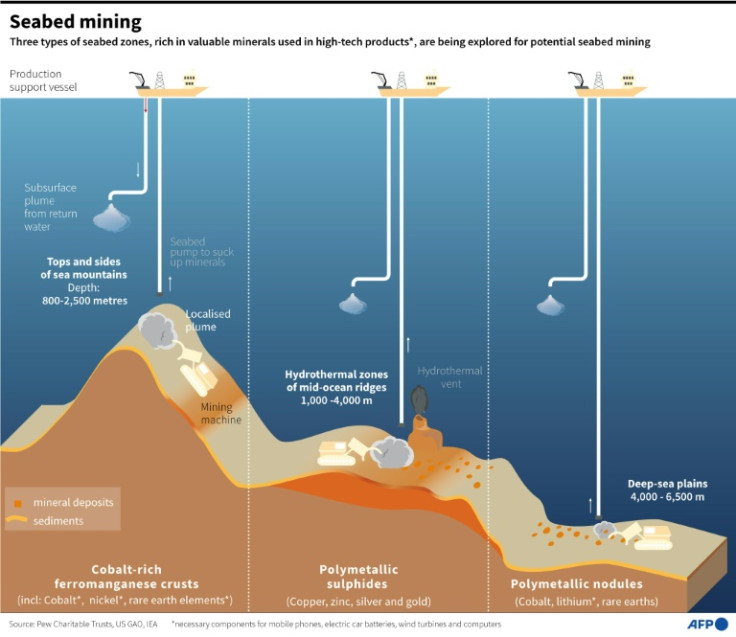International Seabed Authority Delays Deep-sea Mining Regulations

KEY POINTS
- The International Seabed Authority announced a plan to adopt regulations of deep-sea mining in 2025
- The seabed is home to vast reserves of minerals needed for a low-carbon future
- MIT is leading research on the consequences of deep-sea mining on the ocean and ocean life
Deep-sea mining may be the future of a low-carbon world, but the International Seabed Authority has delayed the adoption of regulations to 2025. Research is being done to monitor the impacts of deep-sea mining.
The International Seabed Authority, the United Nations body created though the United Nations Convention on the Law of the Sea "through which States Parties to UNCLOS organize and control all mineral-resources-related activities in the Area for the benefit of humankind as a whole," held their 28th Session from July 10 to 21. This session had one main agenda, negotiating the draft regulations for deep-sea mining.

On the final day, the decision was made to create a roadmap to adopting regulations. The plan is now to adopt the regulations at the 30th Session in 2025 and continue negotiations through the 29th Session in 2024.
These negotiations are taking longer than anticipated, as the ISA attempts to balance the need for deep sea minerals with protecting the oceans and ocean life. These resources, however, are becoming more valuable as the world continues transitioning to a low-carbon future.
A low-carbon future currently requires an increasing number of lithium-ion batteries according to an Massachusetts Institute of Technology report published in 2019 . These batteries offer the "best energy density of any commercially available battery" and other more recent battery technologies are still a "decade" away.
Some of the most important resources for these batteries are found in polymetallic nodules scattered across the seabed. These nodules are comprised of "nickel, cobalt, copper and manganese."

At present, nickel and cobalt are mined on land, with 60% of the world's cobalt coming from the Democratic Republic of the Congo. The area known as the Clarion Clipperton Fracture Zone, located between Hawaii and the West Coast of the US is expected to contain, "six times more cobalt and three times more nickel than all known land-based stores" along with "vast deposits of manganese and a substantial amount of copper."
With seemingly limitless resources necessary for electric vehicles, smartphones, and other developing technology, the hesitation to allow companies to harvest the raw material is important. Before harvesting the material, it is important for scientists to understand how the process will impact the ocean as well as ocean life.
The process to harvest the polymetallic nodules, described by MIT professor Thomas Peacock in a 2019 video published by MIT, the director of the Environmental Dynamics Laboratory in the school's Department of Mechanical Engineering, requires a "surface operation vessel" which will deploy a "collector vehicle" down to 4,000 meters, tethered to the operation vessel.
However, this process produces two different types of plumes. The first is a "sediment plume" or "collective plume," which is created by the vehicle shaving 10-15 centimeters from the seabed surface during the collection process. The second is called a "discharge plume," as the sediment is dumped back into the ocean from the surface vessel after the nodules are collected.
This creates a problem as tracking these plumes is difficult, and the consequences are unknown.
Professor of biological oceanography, Cindy Van Dover, wrote in the 2019 report that she worries about the consequences to ocean creatures. Some of the concerns include "clogging of filter feeding structures," "burial of organisms on the sediment" and the toxicity of from "some metals that get into the water column."
International Business Times reached out to representatives of MIT, including Peacock, but neither were immediately available for comment on the recent results of their research.
The results of these regulations over the next two years will impact the future of energy storage and a low-carbon society. Businesses have the potential to make millions with the diversity of resources found on the seabed.
© Copyright IBTimes 2025. All rights reserved.






















